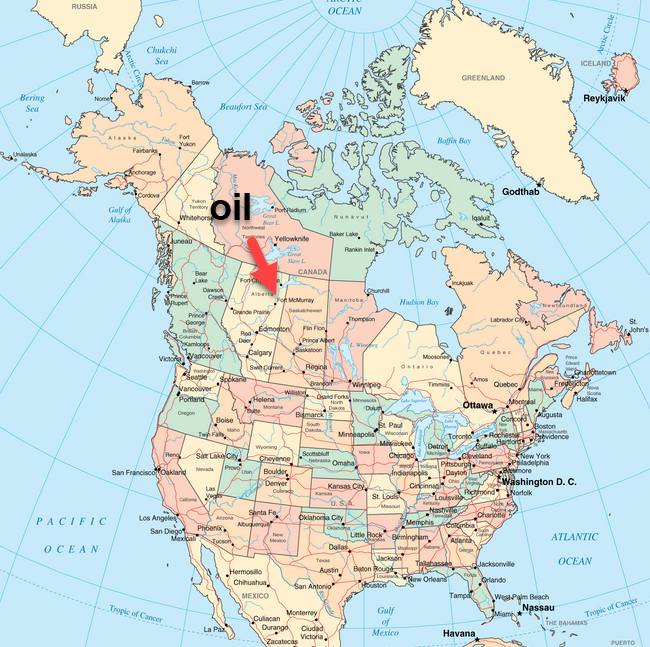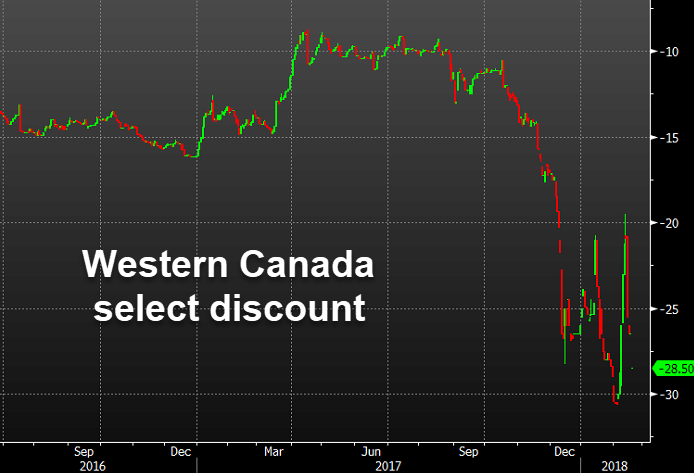Pipeline glut costs Canada billions
Ok, here is a map of Canada showing where the oilsands are. It's the third-largest reserve of crude outside of Saudi Arabia and Venezuela.

As you can see, it's surrounded by ocean in three directions.
To the south, is the United States.
In an astonishing example of short-sightedness, virtually the only oil pipelines go to the United States, where the oil is refined or exported, often from the Gulf coast.
This gives Canada exactly one market to sell it's oil -- the United States. It was a risky strategy but it worked relatively well until about 10 years ago when shale technology emerged.
Now the US doesn't need Canadian oil. It's refineries are plenty busy with shale and traditional oil. Worse, the pipelines from Alberta are now jammed with share from North Dakota. Lately, the Keystone pipeline has had some problems too.
So Canadian companies are forced to discount their oil. Severely.
Today the discount is $28.50, which means a barrel of Canadian oil sells at $34 compared to WTI at $62.10. It's a 45% discount.

It would be erased completely if there was a pipeline and export terminal on the West coast but the hippies in Vancouver have blocked it and the Quebec government stopped a plan to pipe it all the way to the east coast. The federal government has ignored the problem for generations in a stunning lack of foresight.
Scotiabank is out with a report today on how much the lack of pipeline capacity is costing Canada. They say the discount is likely to stay around current levels until late 2019 and it will be at least 2020 before it's brought down to a normal level around $8 (which accounts for the lower grade and transportation costs).
"Pipeline approval delays have imposed clear, demonstrable and substantial economic costs on the Canadian economy. If maintained at current levels, the discount on Western Canadian oil would shave C$15.6 billion in revenue annually from the sector," the economists say. That's 0.75% of GDP.
Even if more rail is used to transport the oil, it will still result in C$10.8 billion in foregone profits.
That's also money that will sink right out of the Canadian trade balance and hurt GDP growth. It's a big reason why USD/CAD is trading at 1.2634 and why the Canadian dollar is the worst year-to-date performer in G10 FX.



